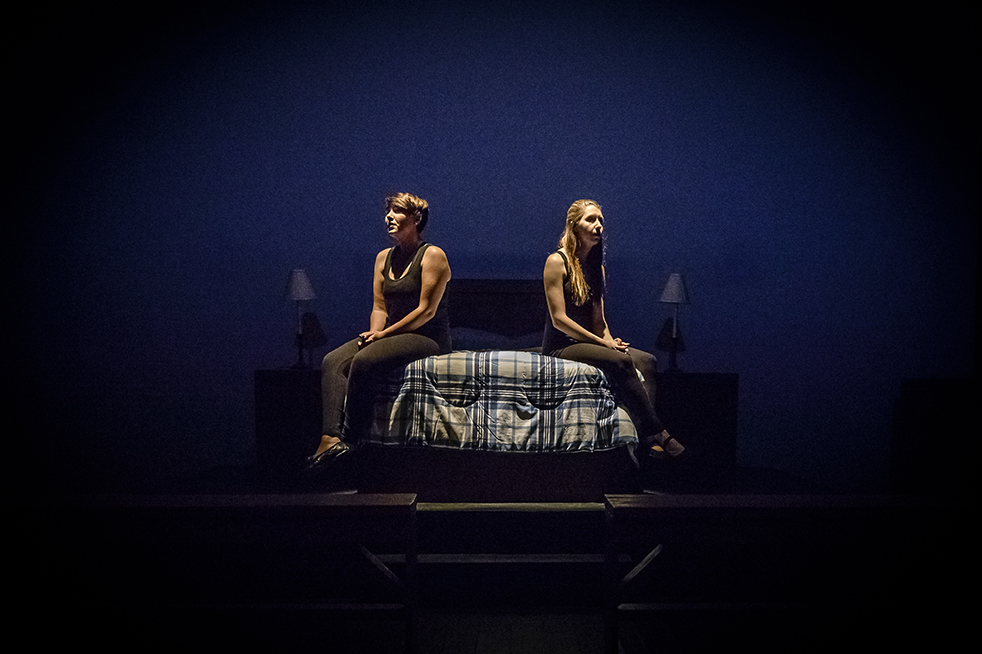“Parallel Lives” is an amalgam of several thematically connected, yet narratively independent, sketches based on Mo Gaffney and Kathy Najimy’s Off-Broadway show, “The Kathy and Mo Show.”
It is rather obvious that feminist sensibility brings Eve Ensler’s ever-popular “The Vagina Monologues” to mind while its experimental nature is reminiscent of sketch comedy shows
such as the popular “Saturday Night Live.”
Last Friday, Sept. 25, DramaTech started its busy season with the spirit of comedy in “Parallel Lives,” which most likely will have to fade into a more serious tone as the student-run theatre prepares for its second mainstage show of the semester, William Shakespeare’s “Othello.”
The one-act production of “Parallel Lives” captures the essence of social satire without losing the intimacy that is so often cast aside in the midst of fun and laughter.
“Parallel Lives” opens with two Supreme Beings creating the human condition as we know it
in the manner of someone decorating a house or choosing a prom dress that feels just right: The color palette is of the utmost concern.
After this absurdly funny scene, sketches of the day-to-day lives of ordinary men and women are put under the spotlight as the Supreme Beings take a look at the long-term outcomes of their design. In these sketches, controversial and sensitive topics such as gender roles, racism, religion, abortion and AIDS are touched upon in a fairly lighthearted manner through the lenses of diverse characters.
Although the portrayals of the characters are infused with humor and energy, at no point do any of the performances feel like caricatures. On the contrary, the actors bring out the humanity and complexity in each character. This is an especially impressive feat because, being symbols of specific demographics, the characters in “Parallel Lives” could very easily have been reduced to one-dimensional stereotypes for comedy’s sake.
Additionally, the nuances of the play-viewing experience were so subjectively shaped that one could not help but think that both the writers and the director were dead, as Roland Barthes, a literary theorist and philosopher, would have described it. The show was continuously created and recreated by each individual in the audience in a way that does not happen with many of the plays that follow the traditional narrative arc.
The audience leaving a performance of Arthur Miller’s “The Crucible” will probably be unanimously interested in the same turning points of the play. However, if the unsynchronized laughter coming from the audience is indicative of anything, each spectator of “Parallel Lives” seems to relate to a very different part of the show compared to the person sitting to either side of them.
Originally a two-woman show, “Parallel Lives” was altered to be staged by six actors of both sexes by DramaTech. This casting obscured the humor that is inherent in reversing the dynamics of the traditional male impersonation of women and the political undertones of gender-bending acting.
Still, this is an understandable choice given practical reasons and could even be said to have provided the audience with a wider spectrum of subjectiveness through the actors.
Although the two Supreme Beings are not pleased with how white people and men turned out to be, it is almost certain that they enjoyed every minute of DramaTech’s “Parallel Lives” and were very proud of themselves for finally getting something right.
Fortunately for those who have not been able to see DramaTech’s rendition of “Parallel Lives” this passed week, the show will continue to be performed through Oct. 3.
On a rather unrelated note, if able to find a way to step back from the hilarious performances, try to spot the toaster so inc-
onspicuously waiting for the sympathetic nod of the audience members.
